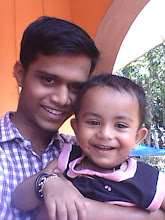PLANT LAYOUT
PLANT LAYOUT
Plant layout refers to the physical
arrangement of production facilities. It is the configuration of departments,
work centers and equipment in the conversion process. It is a floor plan of the
physical facilities, which are used in production.
According to Moore “Plant layout is a plan of an optimum
arrangement of facilities including personnel, operating equipment, storage
space, material handling equipment and all other supporting services along with
the design of best structure to contain all these facilities”.
Definition of Plant Layout
According to J.L. Lundy, “ Plant Layout
ideally involves the allocation of space and the arrangement of equipment in
such a manner that overall operating costs are minimized”
George R Terry defines; “Plant Layout is
the arrangement of machines, work areas and service areas within a factory.”
Objectives of Plant Layout
1. Streamline the flow of materials
through the plant.
2. Facilitate the manufacturing process.
3. Maintain high turnover of in-process
inventory.
4. Minimize materials handling and cost.
5. Effective utilization of men,
equipment and space.
6. Make effective utilization of cubic
space.
7. Flexibility of manufacturing
operations and arrangements.
8. Provide for employee convenience,
safety and comfort.
9. Minimize investment in equipment.
10. Minimize overall production time.
11. Maintain flexibility of arrangement
and operation.
Importance
of Plant Layout
1) Effective
use of available area.
2.
Minimization of production delay.
3. Improved
quality control.
4. Minimum
equipment investment.
5. Better
production control.
6. Better
supervision.
7. Improved
employee morale.
8. Avoidance
of unnecessary and costly changes
CLASSIFICATION OF LAYOUT
Layouts can be classified into the
following five categories:
1. Process layout
2. Product layout
3. Combination layout
4. Fixed position layout
5. Group layout
1.Product layout
In this layout the machines are arranged
according to the processing sequence of the product. Material flows directly
from one workstation to other workstation. Machines are not shared by the
products. This type of layout is used for high volume production. For proper
utilization of machines sufficient production volume is required.
2.
Process layout
Process layout is recommended for batch
production. All machines performing similar type of operations are grouped at
one location in the process layout
3. group layout
When production volume is not sufficient
for product layout, group layout is used. Here products are grouped in to
logical product families. The groups of processes are called cells. So it is
also called as cellular layout. It is a compromise between product and process
layout. Since products are grouped into families this technology is also called
as group technology with each individual cells are called GT cells.
4. Fixed Position Layout
This is also called the project type of
layout. In this type of layout, the material, or major components remain in a
fixed location and tools, machinery, men and other materials are brought to
this location. This type of layout is suitable when one or a few pieces of
identical heavy products are to be manufactured and when the assembly consists
of large number of heavy parts, the cost of transportation of these parts is
very high.
5. Combined layout
A combination of process and product
layouts combines the advantages of both types of layouts. A combination layout
is possible where an item is being made in different types and sizes. Here
machinery is arranged in a process layout but the process grouping is then
arranged in a sequence to manufacture various types and sizes of products. It
is to be noted that the sequence of operations remains same with the variety of
products and sizes.




0 comments:
Post a Comment